Abstract
An indole-requiring (Ind−) mutant of Salmonella typhimurium, isolated from a culture of a leaky trpA mutant, was genetically analyzed by P22-mediated transduction. The mutation site giving the Ind− phenotype was shown to be in trpB, the second gene of the trp operon. A second mutation at this site resulted in change of nutritional requirement from indole to anthranilic acid (Anth−). This phenotype is normally associated with mutations in the first trp gene, trpA. However, the Anth− mutant also excreted anthranilic acid and showed “self-feeding” on unsupplemented media. Of two possible explanations for this aberrant phenotype, the first, that the trpB mutations may be in the “unusual” region, was dismissed on genetic evidence and on the biochemical evidence that an active anthranilate synthetase (AS) is produced. The alternative explanation, that the affected enzymatic activity, phosphoribosyl transferase, is unstable in vivo, but its AS component 2 activity is stable, is considered more probable.
Full text
PDF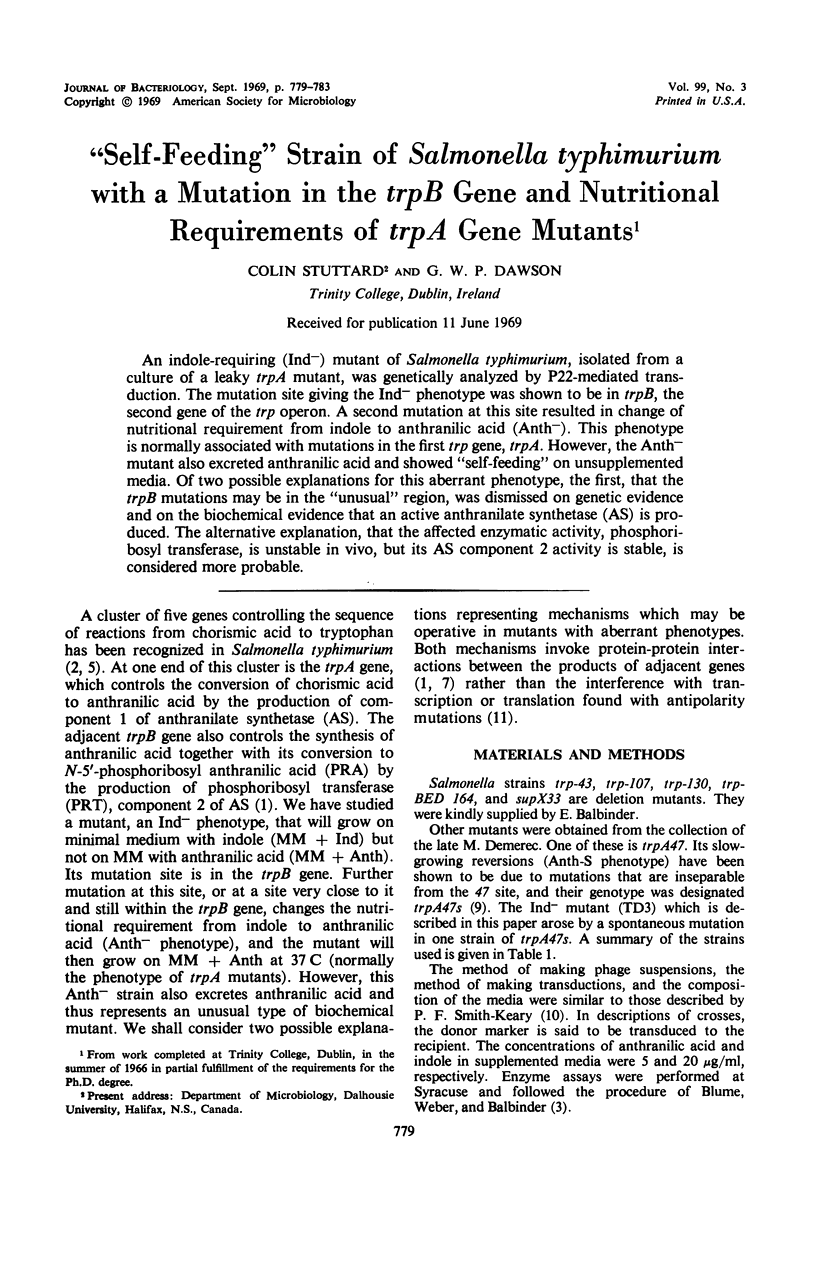
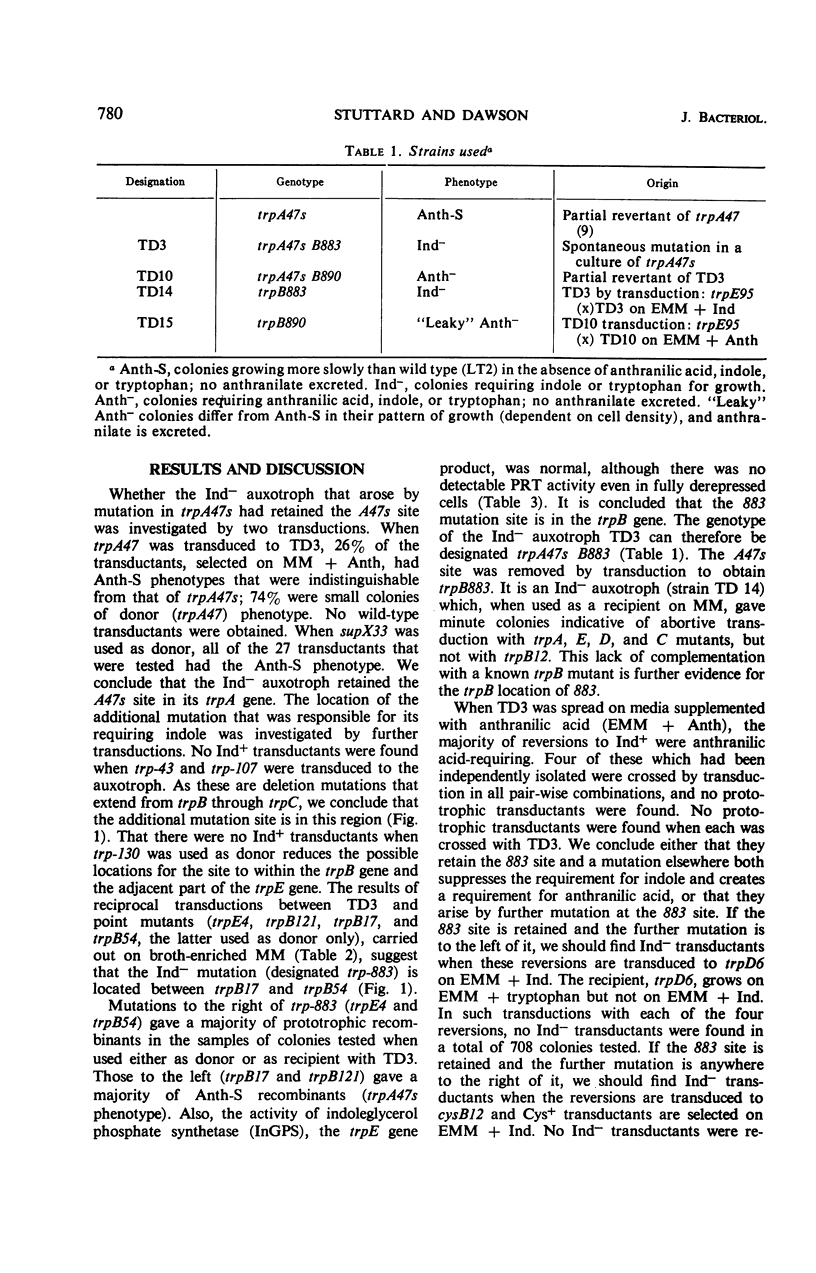
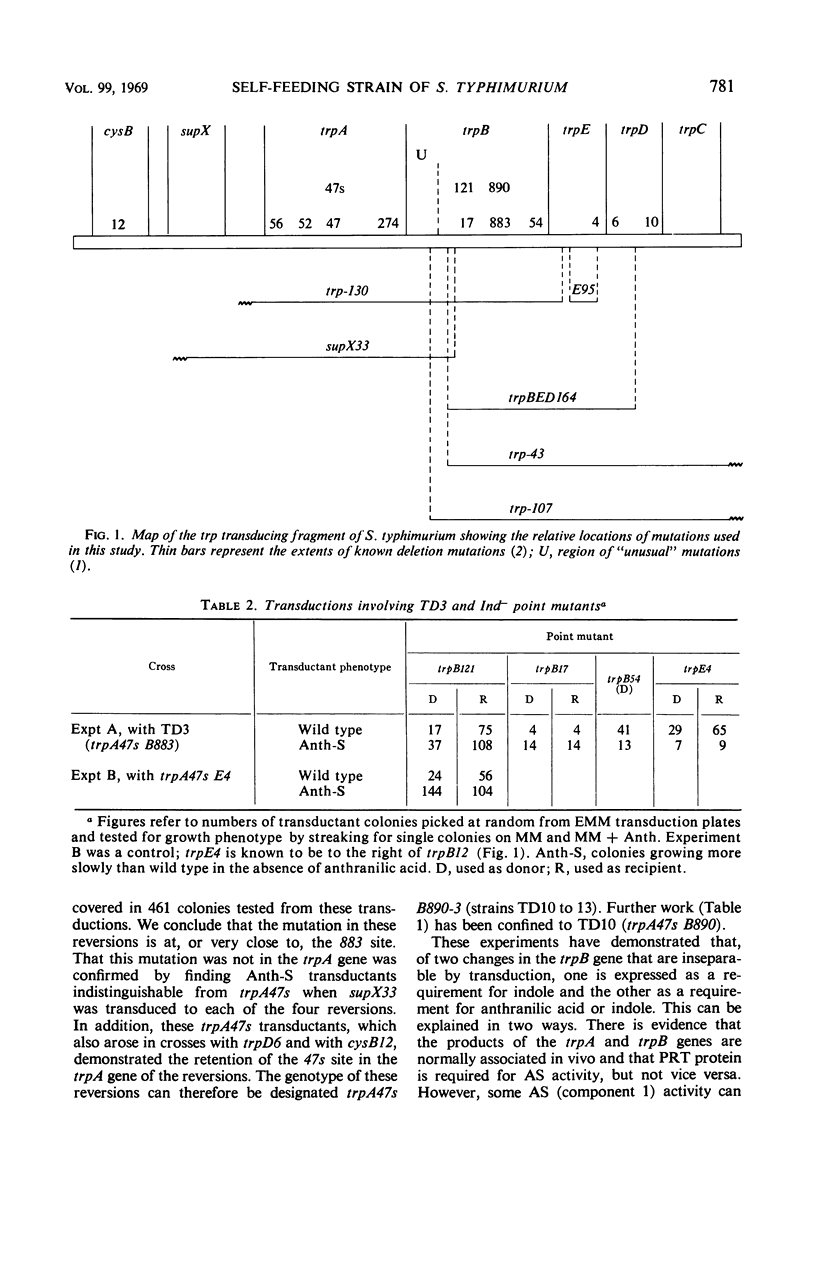
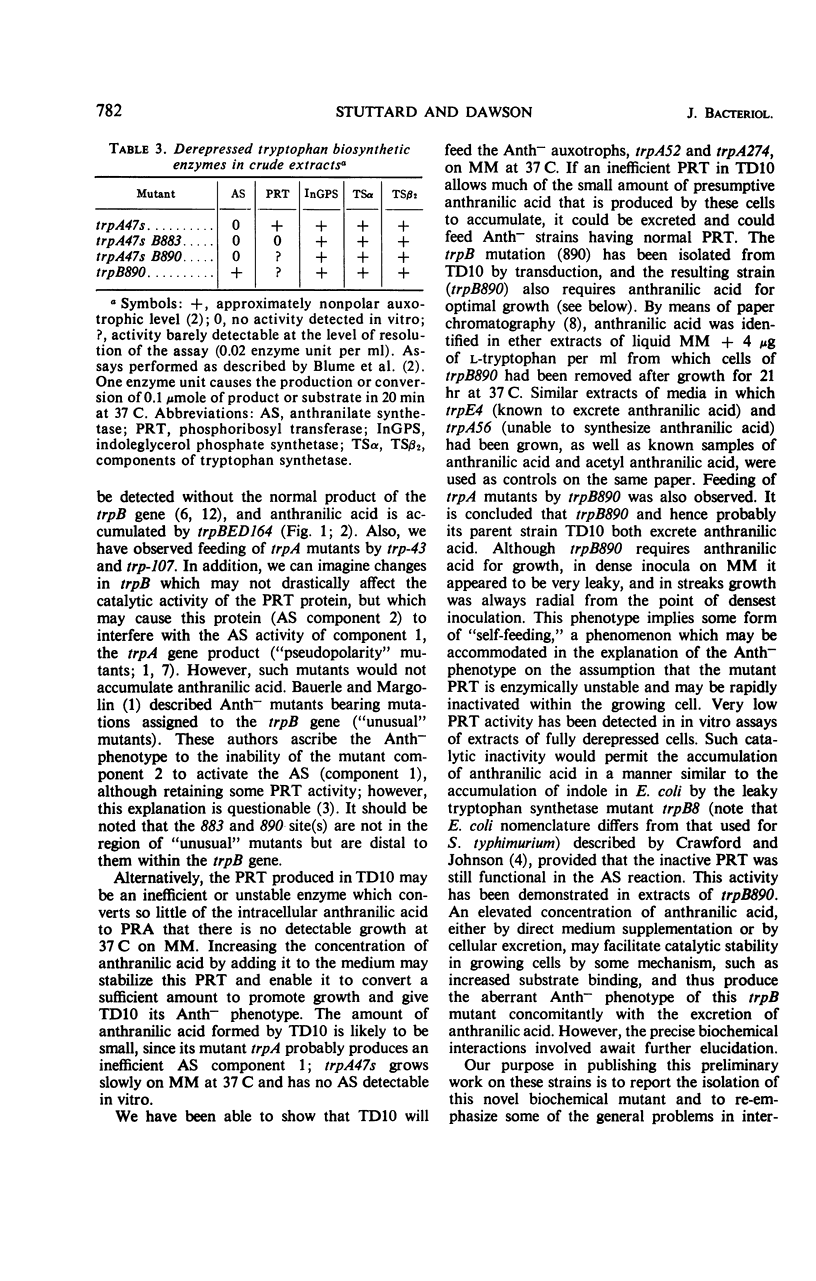
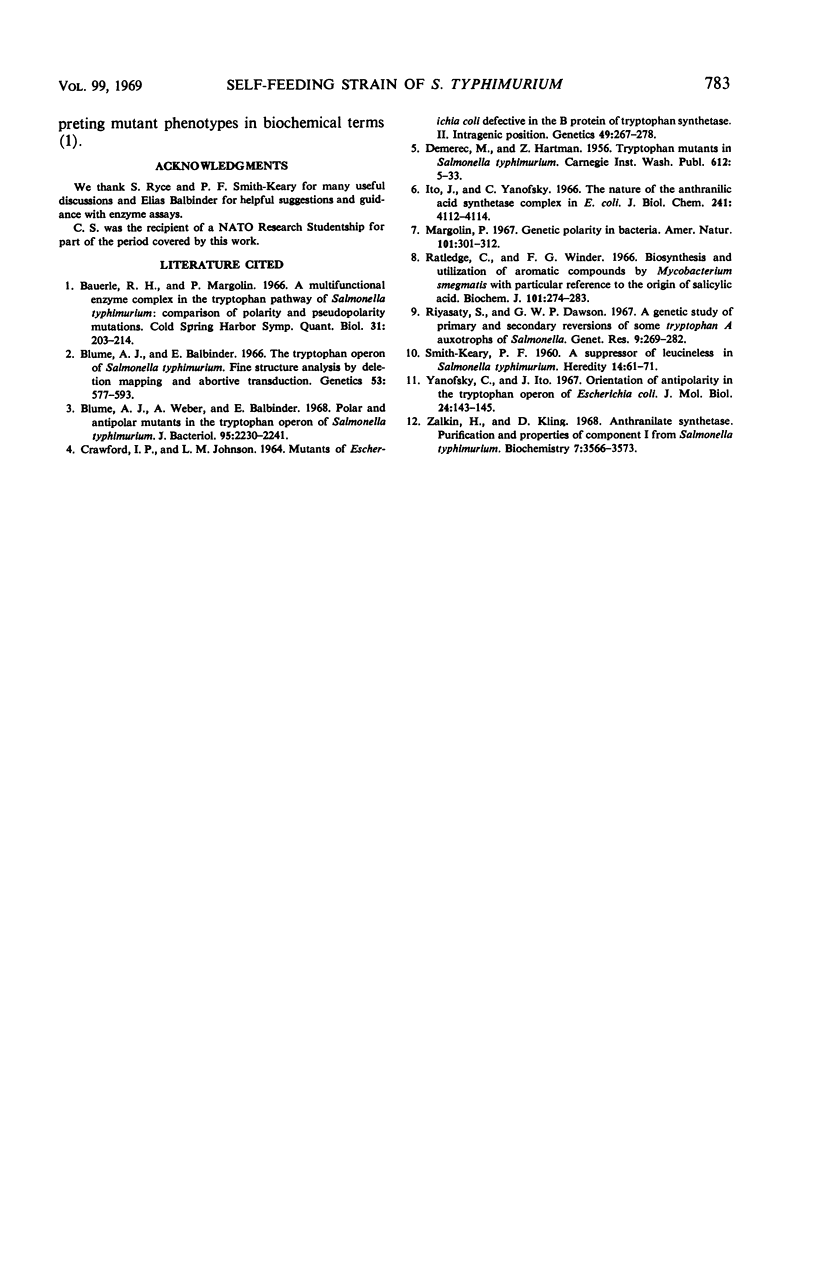
Selected References
These references are in PubMed. This may not be the complete list of references from this article.
- Bauerle R. H., Margolin P. A multifunctional enzyme complex in the tryptophan pathway of Salmonella typhimurium: comparison of polarity and pseudopolarity mutations. Cold Spring Harb Symp Quant Biol. 1966;31:203–214. doi: 10.1101/sqb.1966.031.01.028. [DOI] [PubMed] [Google Scholar]
- Blume A. J., Balbinder E. The tryptophan operon of Salmonella typhimurium. Fine structure analysis by deletion mapping and abortive transduction. Genetics. 1966 Mar;53(3):577–592. doi: 10.1093/genetics/53.3.577. [DOI] [PMC free article] [PubMed] [Google Scholar]
- Blume A. J., Weber A., Balbinder E. Analysis of polar and nonpolar tryptophan mutants by derepression kinetics. J Bacteriol. 1968 Jun;95(6):2230–2241. doi: 10.1128/jb.95.6.2230-2241.1968. [DOI] [PMC free article] [PubMed] [Google Scholar]
- CRAWFORD I. P., JOHNSON L. M. MUTANTS OF ESCHERICHIA COLI DEFECTIVE IN THE B PROTEIN OF TRYPTOPHAN SYNTHETASE. II. INTRAGENIC POSITION. Genetics. 1964 Feb;49:267–278. doi: 10.1093/genetics/49.2.267. [DOI] [PMC free article] [PubMed] [Google Scholar]
- Ito J., Yanofsky C. The nature of the anthranilic acid synthetase complex of Escherichia coli. J Biol Chem. 1966 Sep 10;241(17):4112–4114. [PubMed] [Google Scholar]
- Ratledge C., Winder F. G. Biosynthesis and utilization of aromatic compounds by Mycobacterium smegmatis with particular reference to the origin of salicylic acid. Biochem J. 1966 Nov;101(2):274–283. doi: 10.1042/bj1010274. [DOI] [PMC free article] [PubMed] [Google Scholar]
- Riyisaty S., Dawson W. P. A genetic study of primary and secondary reversions of some tryptophanA auxotrophs of Salmonella typhimurium. Genet Res. 1967 Jun;9(3):269–282. doi: 10.1017/s0016672300010570. [DOI] [PubMed] [Google Scholar]
- Zalkin H., Kling D. Anthranilate synthetase. Purification and properties of component I from Salmonella typhimurium. Biochemistry. 1968 Oct;7(10):3566–3573. doi: 10.1021/bi00850a034. [DOI] [PubMed] [Google Scholar]


